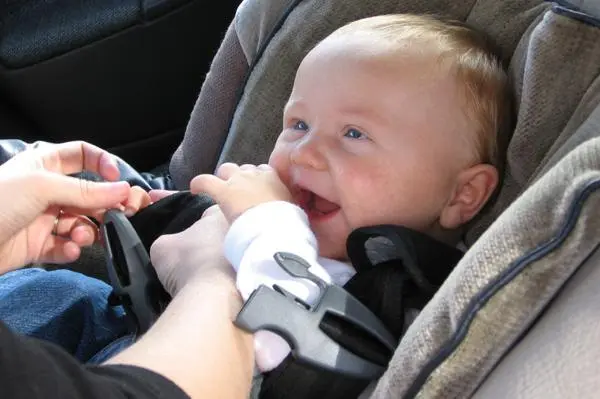
Rear-facing car seats are an essential component of keeping your child safe when traveling in a car, and recent research has caught the attention of experts who are rethinking age guidelines for switching to forward-facing seats. In this article, we discuss the new recommendations from experts about the age limit for rear-facing car seats, the added safety of extended rear-facing use and how that makes a big difference in safety, and some practical advice for parents. For an accurate assessment of safety advice for similar products, trusted sources such as babyhillsthailand car seat is the way to go.
Key Takeaways: Rear-Facing Car Seats
The way rear-facing car seats are designed is that they cradle your child so that in the case of a crash, the crash forces are distributed evenly through their back, head, neck and spine. This design is especially critical for infants and toddlers whose bodies are still maturing. The design of these seats reduces the risk of serious injury by minimizing the forces of impact that can be transferred to vulnerable parts of a child’s body.
For years, parents were told to get a forward-facing seat by age 2. But as new studies and updated safety guidelines have emerged, there are growing recommendations that it’s a child’s size namely, his or her weight and height that should serve as the determining factor in when to switch him or her. The main objective is to keep the baby safe in a position that best supports his or her developing anatomy for as long as the car seat’s design allows without compromising safety.
What Experts Say on Age Limits
Today’s best practices from pediatric safety organizations, including the American Academy of Pediatrics (AAP), now suggest children stay in rear-facing car seats as long as possible. This is supported by research that indicates rear-facing children have a much lower risk of severe injuries when in an accident the longer they stay in that position.
Car seat manufacturers set weight and height limits based on how long they expect children to fit comfortably in rear-facing seats. As long as a child is kept within these limits, the seat is set up to offer the maximum protection. Today’s car seats are engineered to fit children well past the age of 2, with some models safely allowing rear-facing use until a child is 40 to 50 pounds or more. Instead of fixating on a certain birthday, experts say parents should refer to the car seat manual to know when it’s time to move on.
Things to Look at When Deciding the Age Limits for Rear Facing
Here are some important points of reference that can guide you in determining if and when to transition your child from a rear-facing to a forward-facing car seat:
Manufacturer Guidelines:
Each car seat includes an instruction manual that lists maximum weight and height limits for rear-facing use. These limits are established based on extensive safety testing. Following these guidelines will help keep the seat performing as it’s intended should you all be involved in an accident.
Child’s Physical Growth:
Children develop at different rates, so chronological age is not the only measure of readiness to transition. A more accurate guide for making the transition is to check on your child’s weight and height regularly and compare those to your car seat’s specs.
Vehicle Compatibility:
It is also important to make sure that your vehicle allows for the correct installation of a car seat rear-facing. The more secure the installation of the seat, the better the safety, so please double check both the owner’s manual for your particular vehicle and also the instructions for the car seat to get the best fit possible.
Technology in the Field: Improvements in Safety
Newer car seat models usually have better designs that allow for extended rear-facing use. Advancements in materials and energy-absorbing technology allow for higher levels of protection, even as children get bigger. Those features mean that many seats today can safely support a child’s growth well past that classic upper limit.
Advantages of Keeping the Child Rear-Facing for a Longer Period
There are many benefits to going with rear facing for as long as possible. Rear-facing, in the event of a crash, offers improved force distribution over a larger area of the child’s body and reduces stress on the head and neck. This can dramatically reduce the risk of serious injury, which is why many experts recommend rear-facing use well into the toddler years, until a given car seat’s limits are met.
Also, extended rear-facing use allows for more comfort for a young child. Some models also come with adjustable features that grow with the child while keeping them snug and comfortable during use. This not only increases safety but can also help make long car rides more enjoyable for both the child and the parent.
Practical Tips for Parents
Read the Manual:
The first is to read the car seat manual and follow it. Knowing the exact car seat weight and height limits, and installation instructions, is needed to figure out whether the seat you have will work.
Regularly Monitor Growth:
Track your child’s growth and compare it with the recommendations for the car seat. This will help you determine when it’s time to start researching a forward-facing seat.
Ensure Proper Installation:
Regardless of whether it uses the seat belt or the LATCH system, the seat should be solidly secured and move less than an inch in either direction. To gain the protective benefits of a seat, it needs to be secured properly.
Consult Experts:
If all else fails, reach out to a certified child passenger safety technician for assistance with your car seat installation or use. In fact, many communities offer free checks on car seats and can provide a little peace of mind.
Conclusion
Deciding when to transition your child from a rear-facing to a forward-facing car seat is a judgement that is best guided by your child’s size, the specifics of your car seat’s specifications and the recommendations of safety experts. Children rear facing for as many years as possible has been shown to significantly lessen the likelihood of serious injuries, as it ensures that crash forces are distributed more evenly throughout a child’s body. Parents considering such guidance and continuously updating their information from trusted sources like babyhillsthailand would know better what to take into account, so they could maintain the security of children and themselves. Ultimately, the best way for your child to travel is rear-facing, so keep them rear-facing as long as your car seat allows, making each and every trip as safe as possible for your little family.

